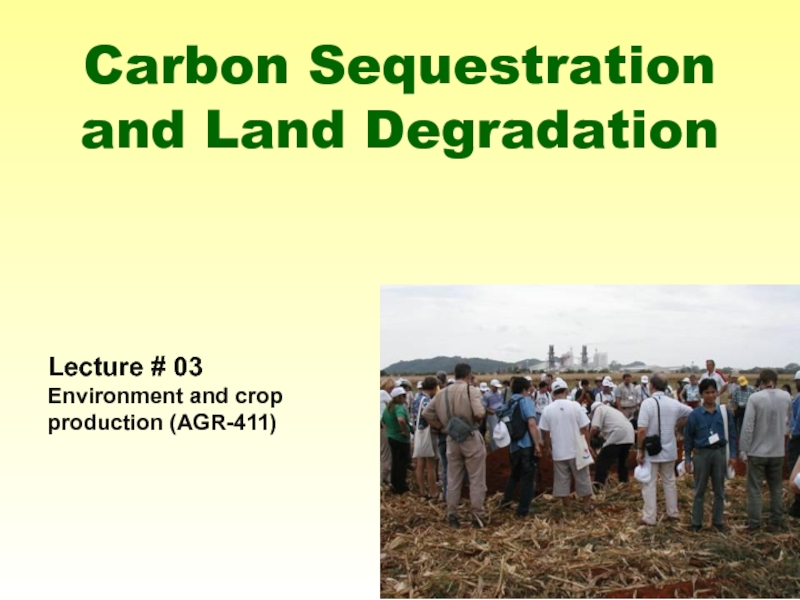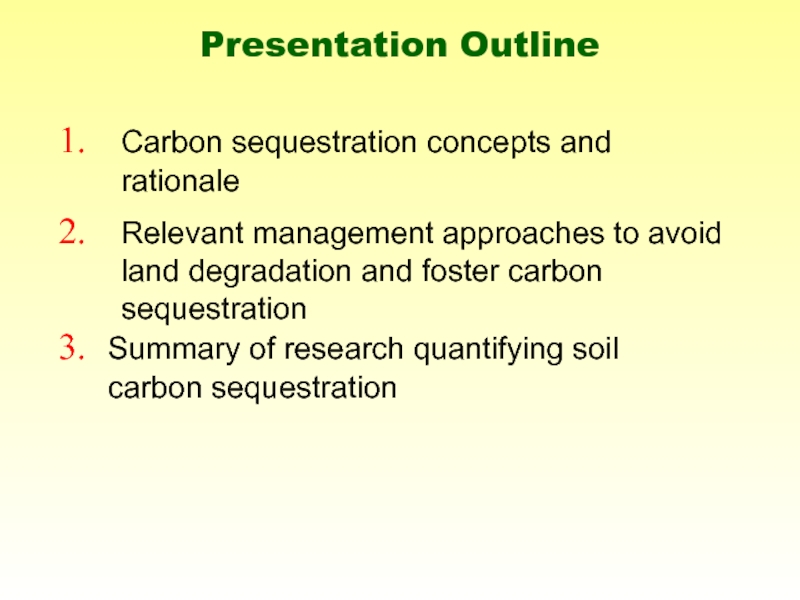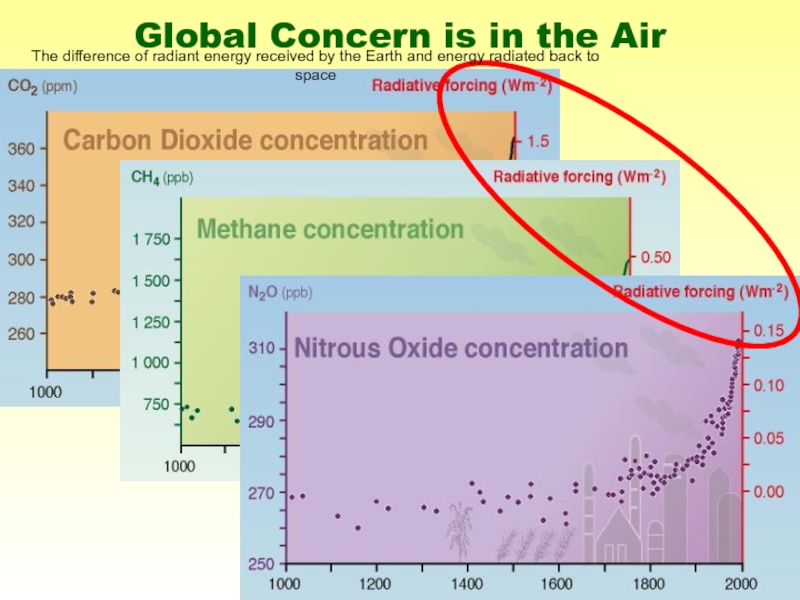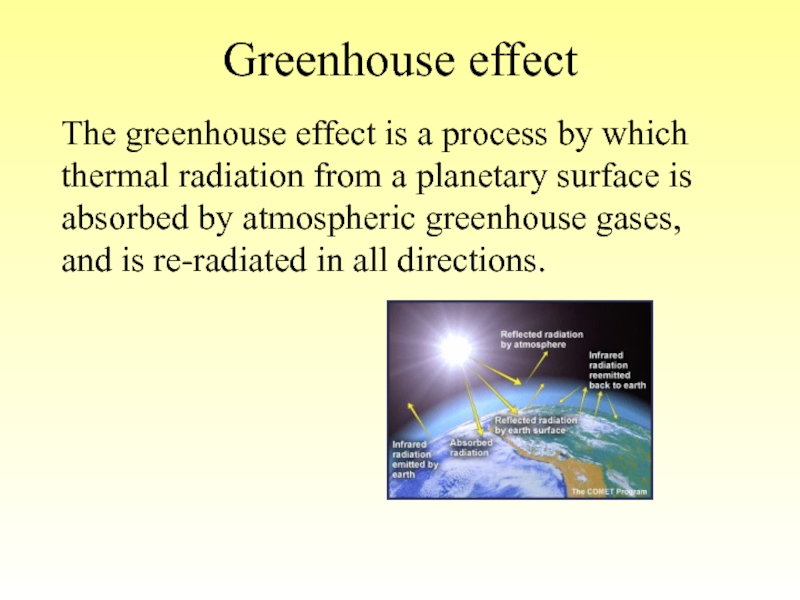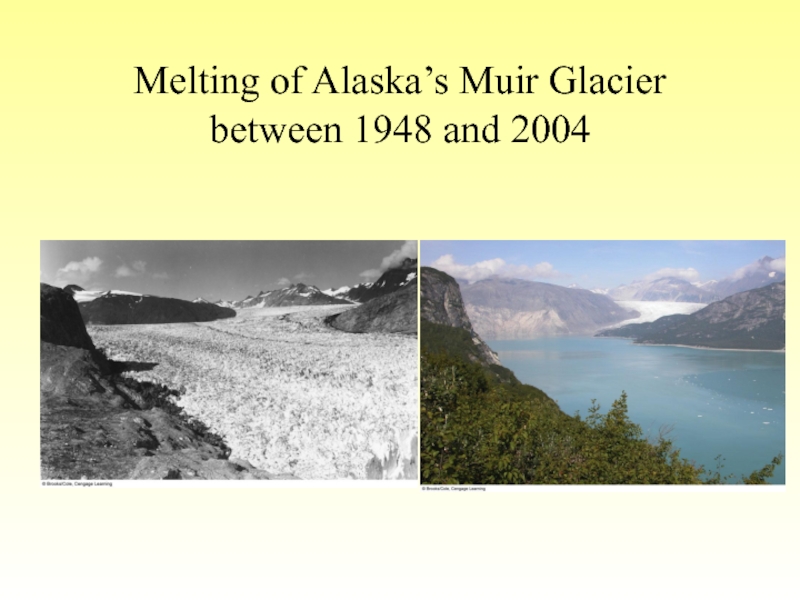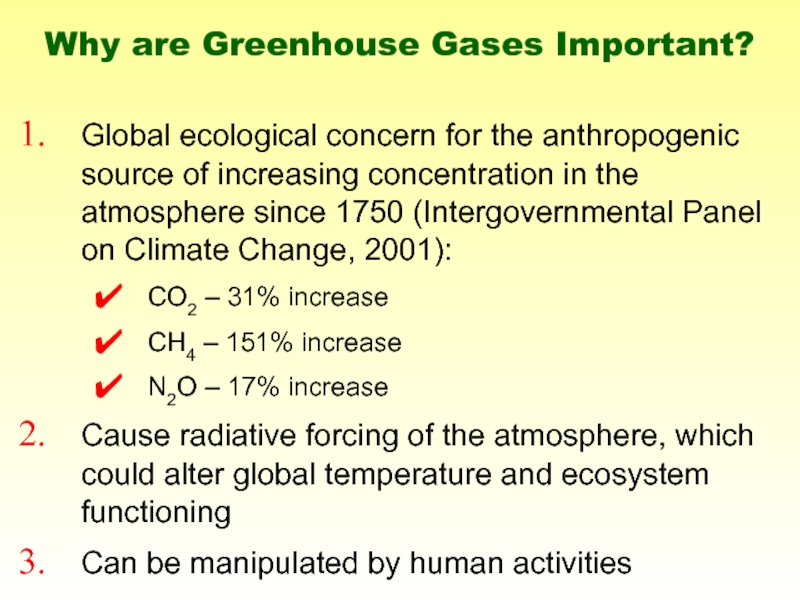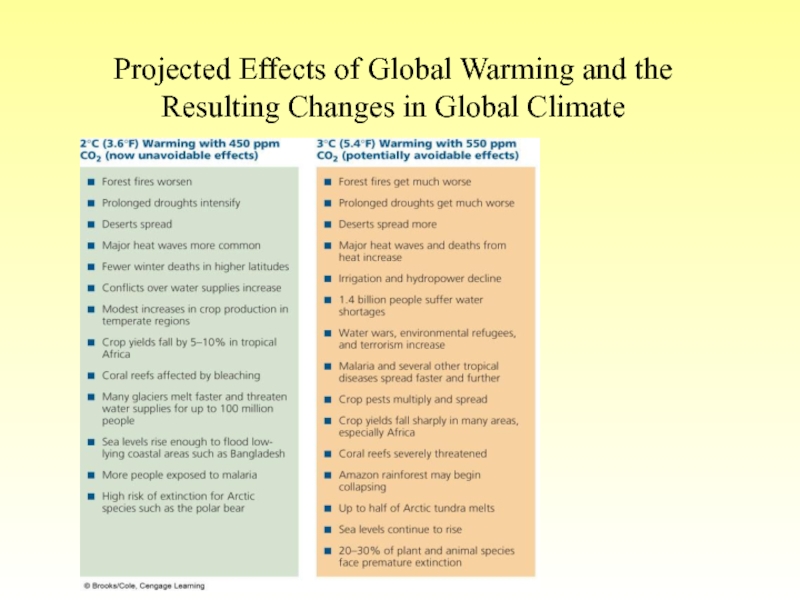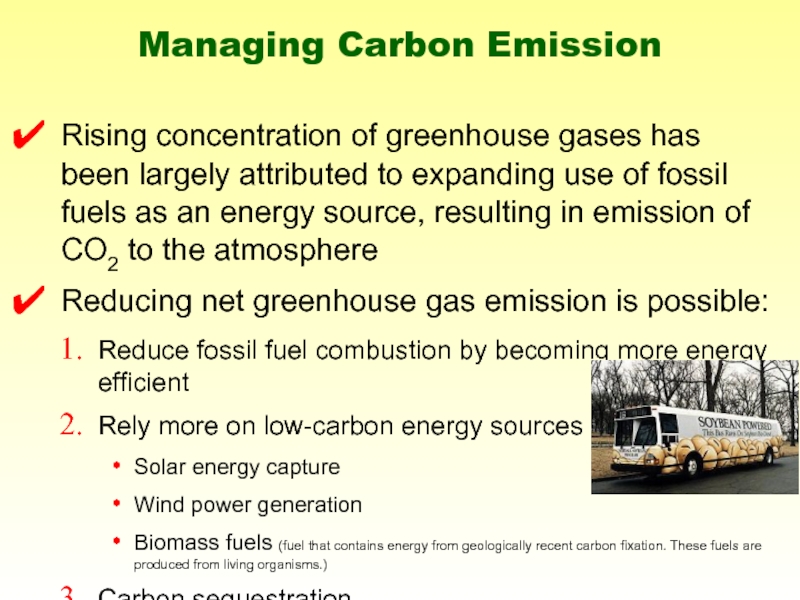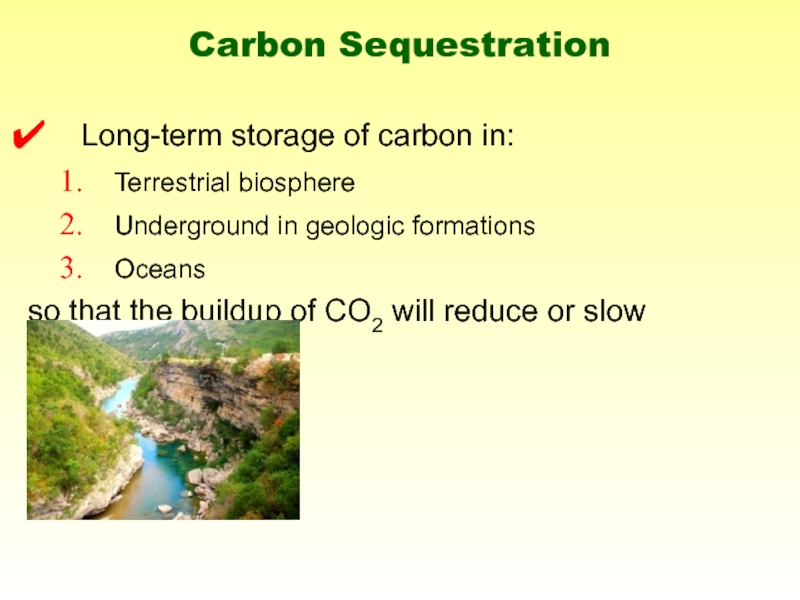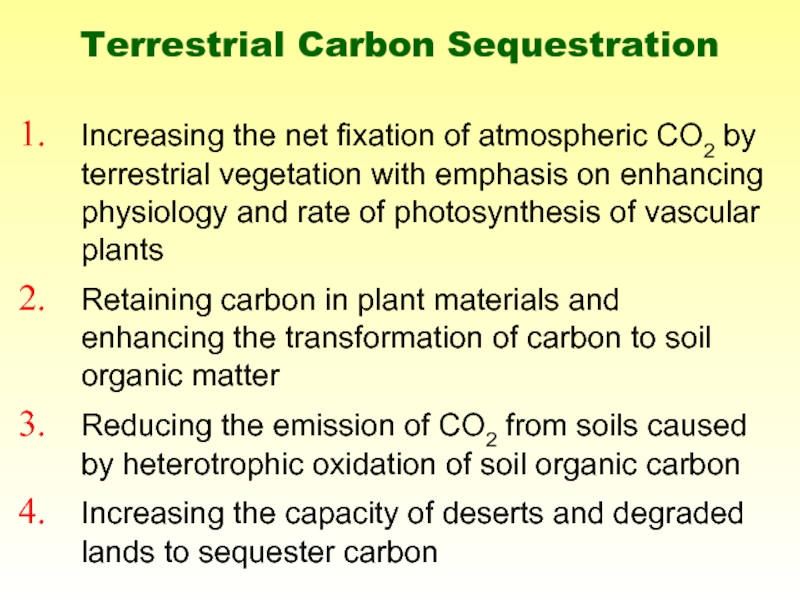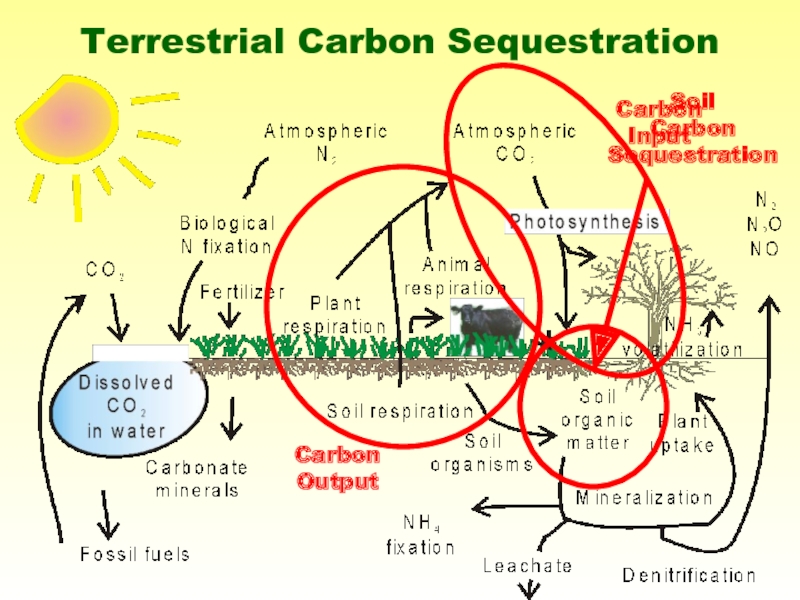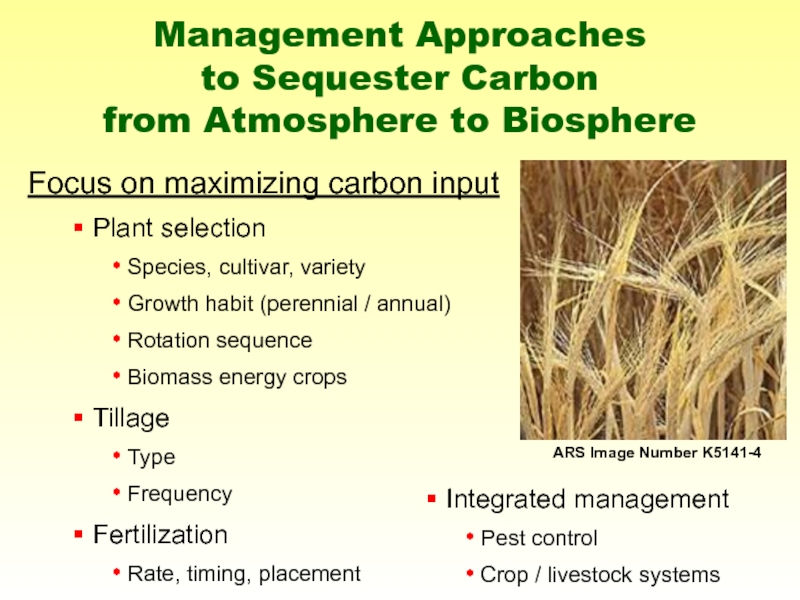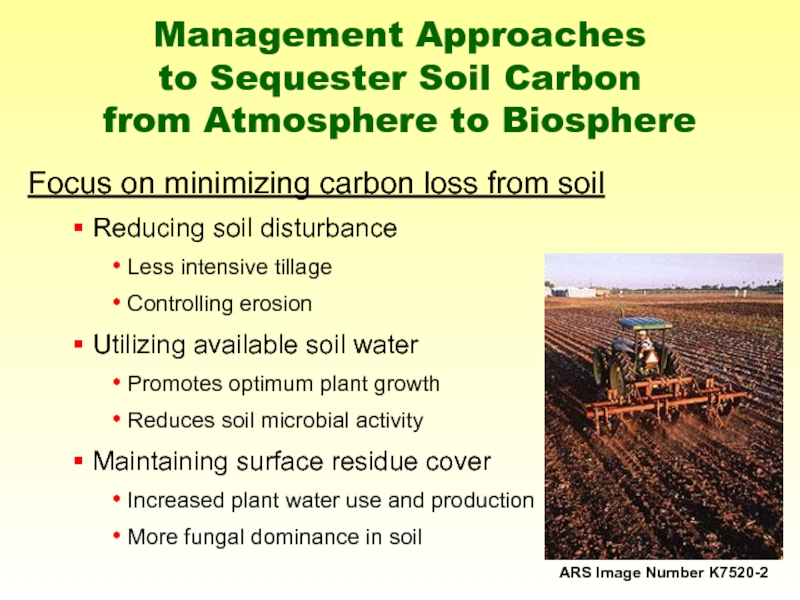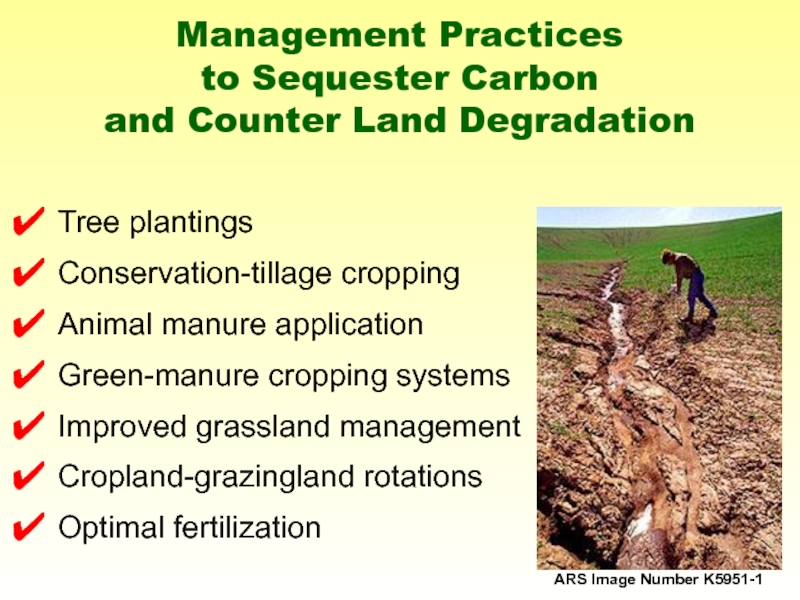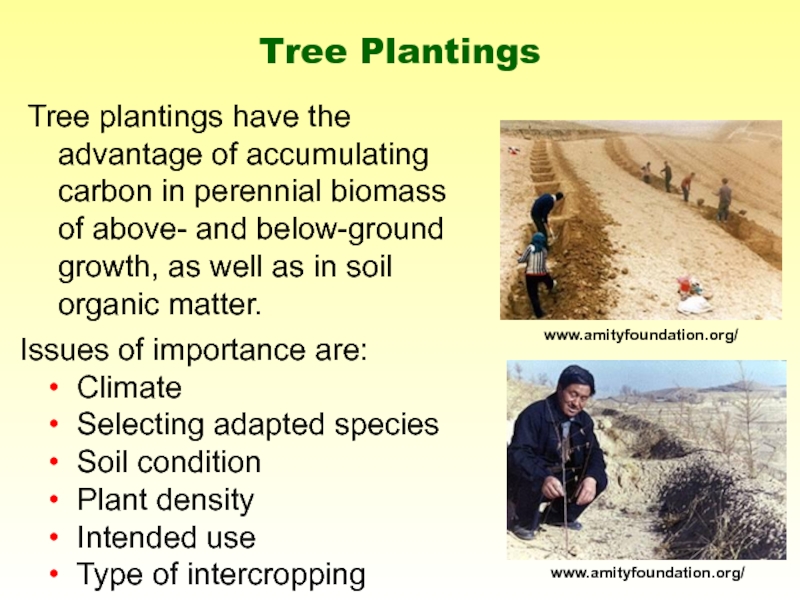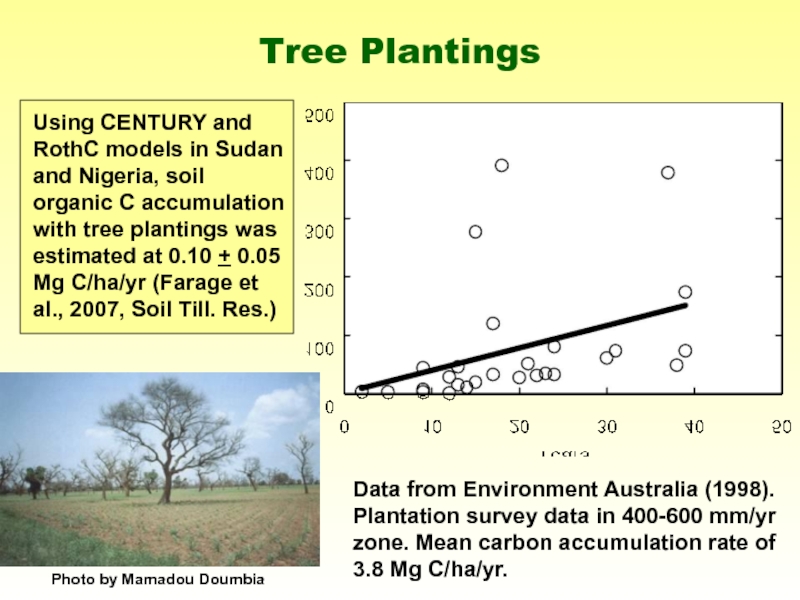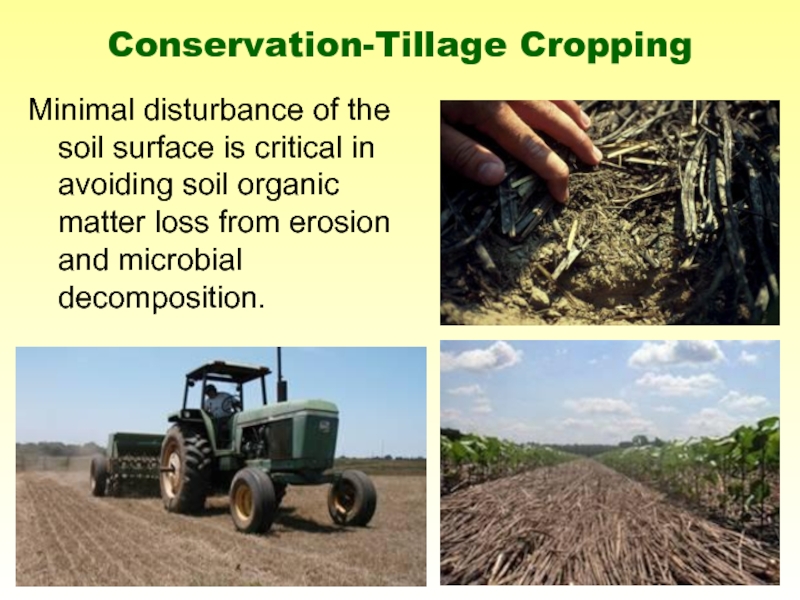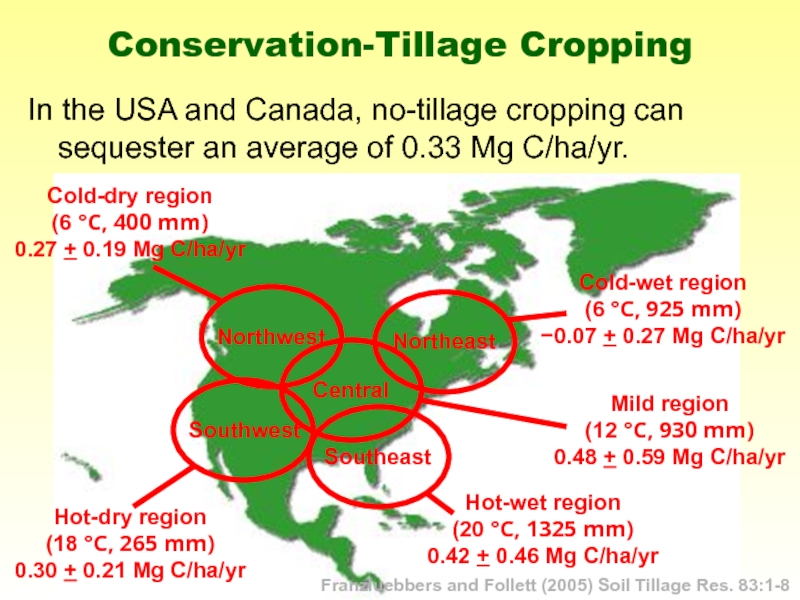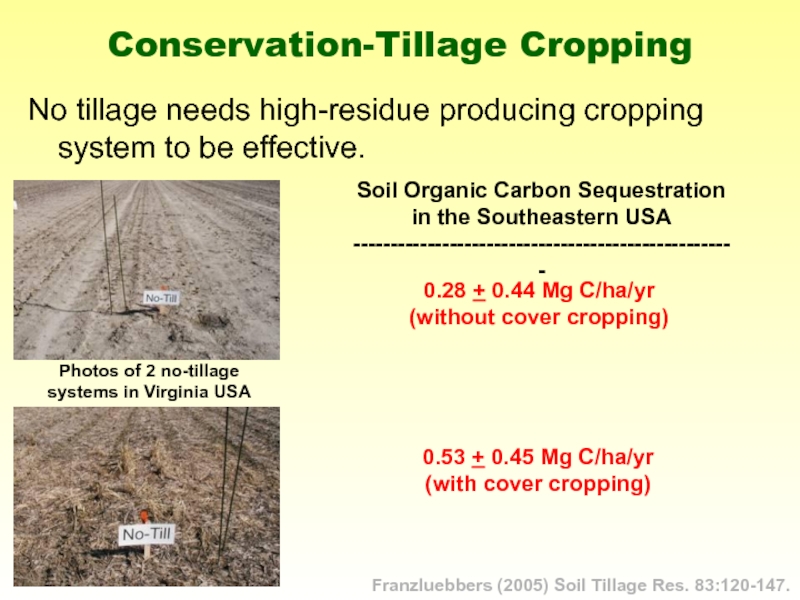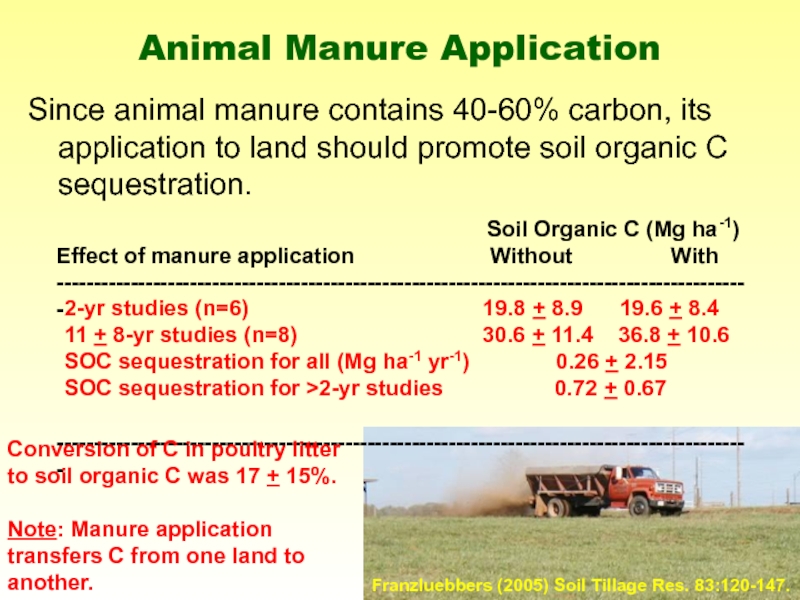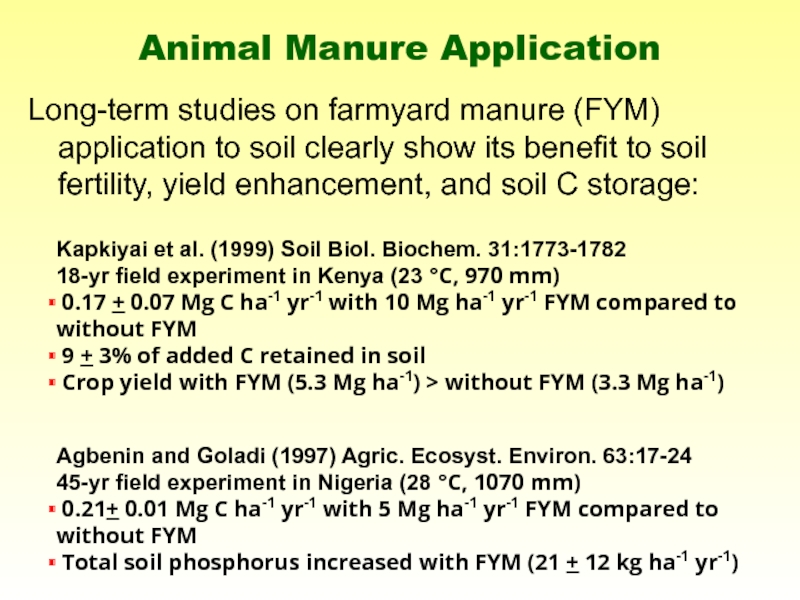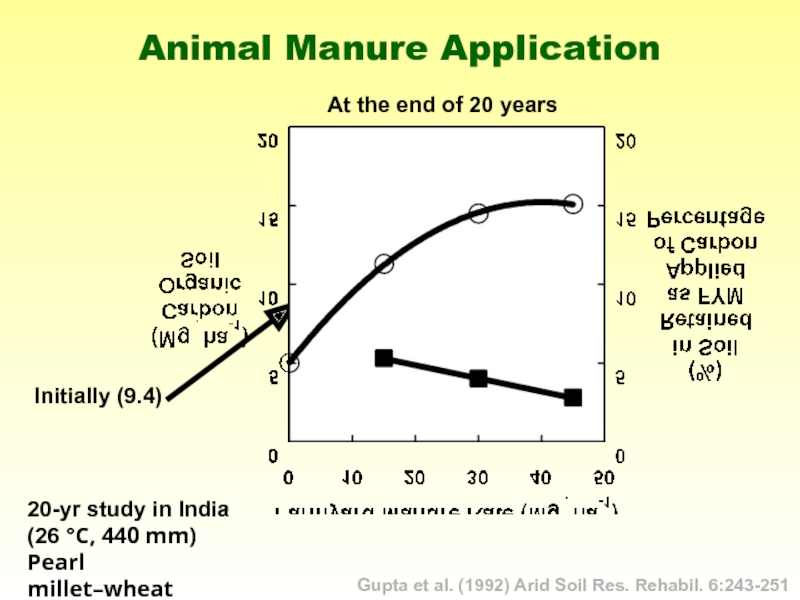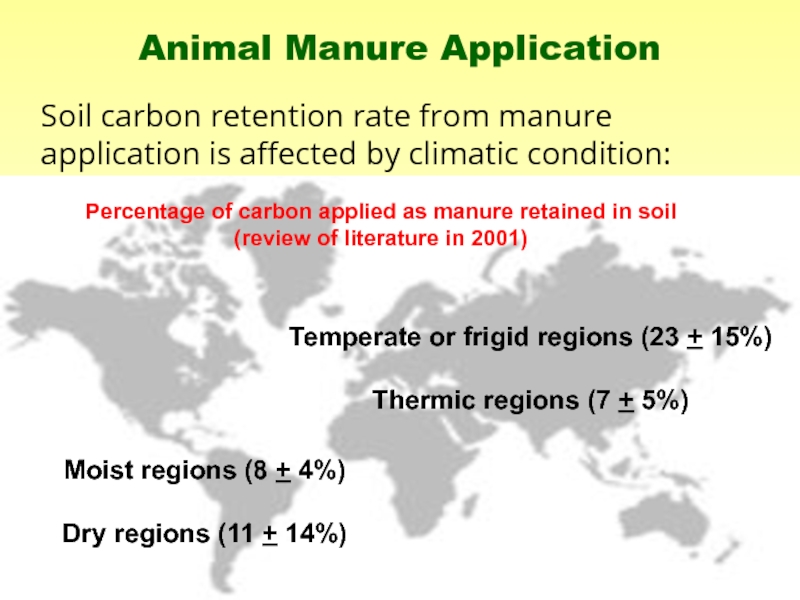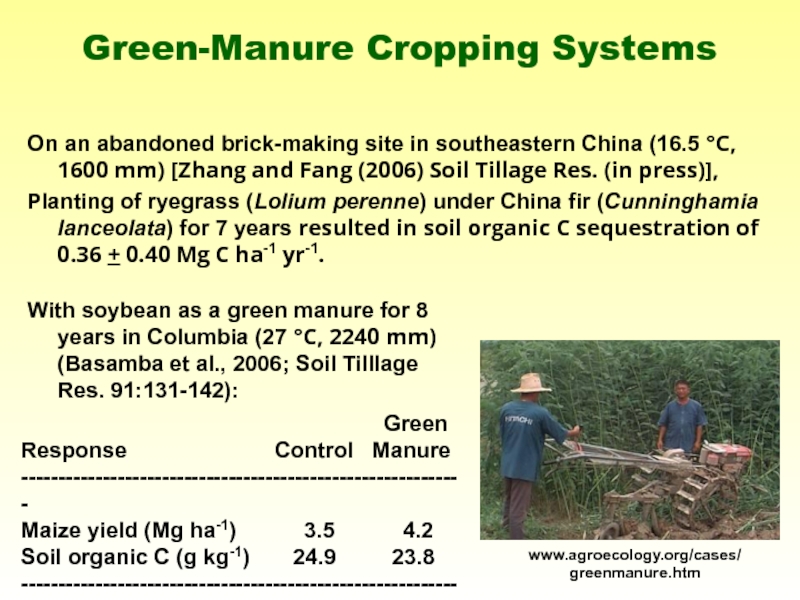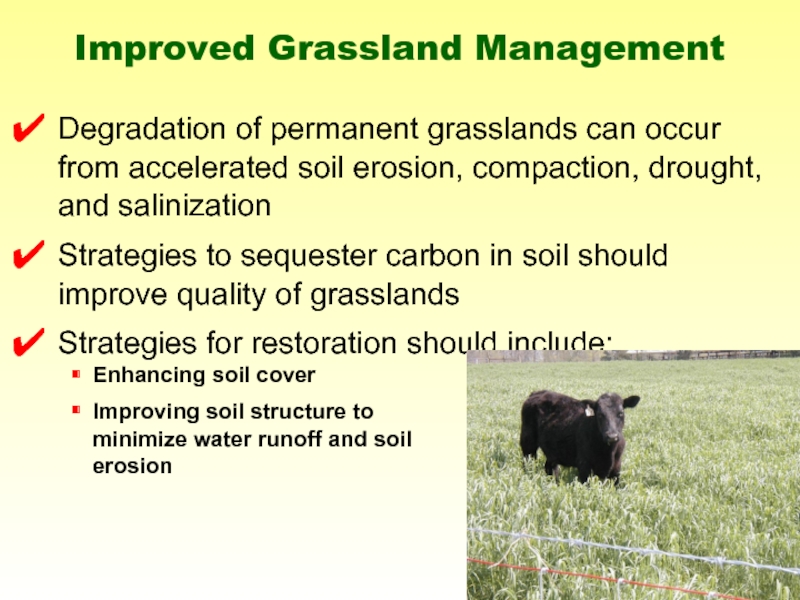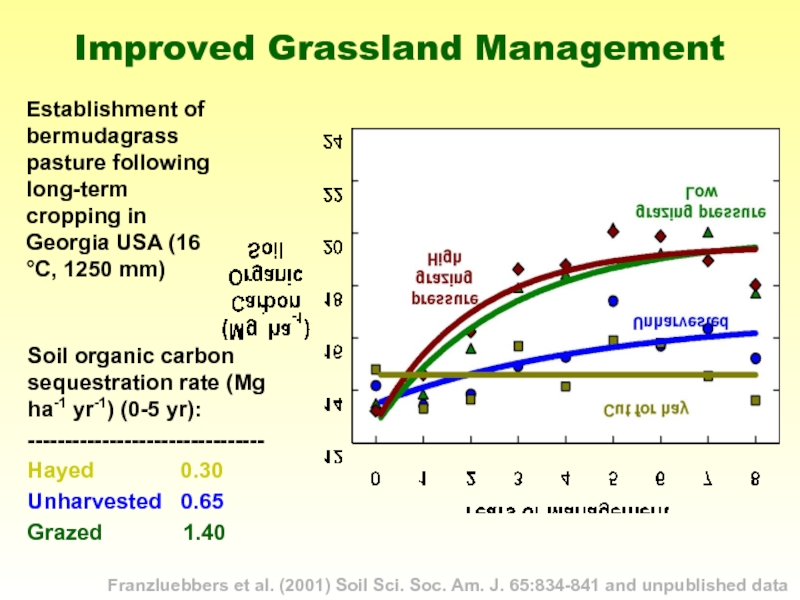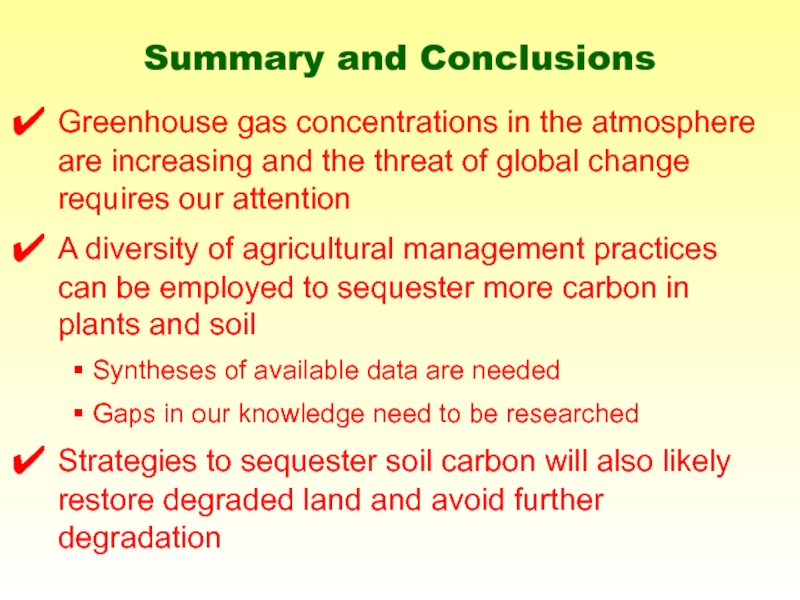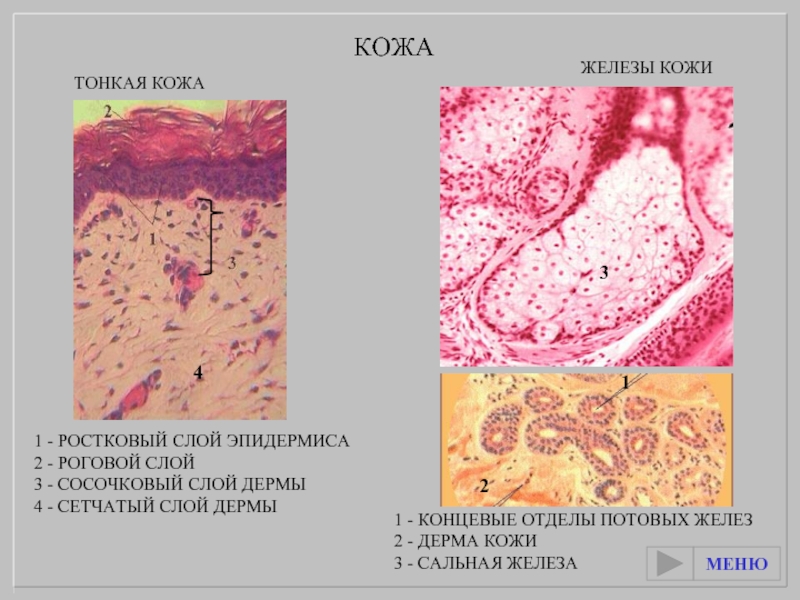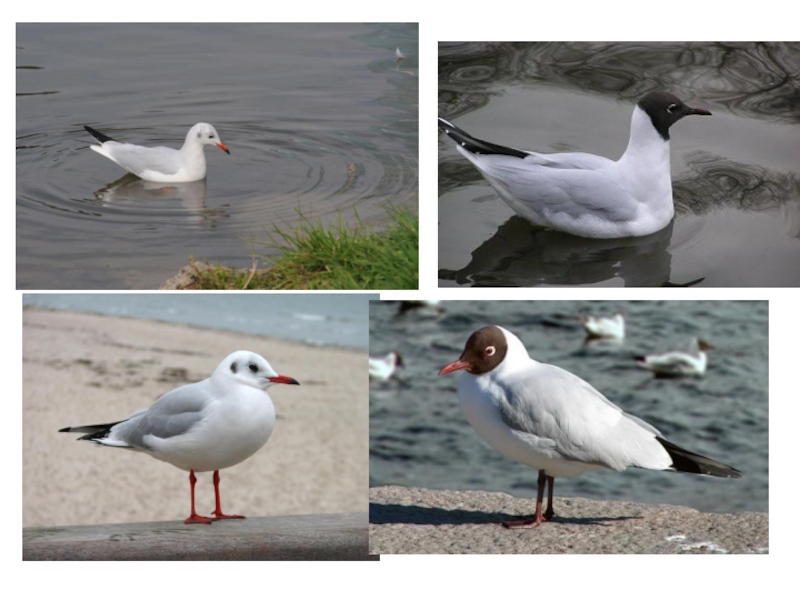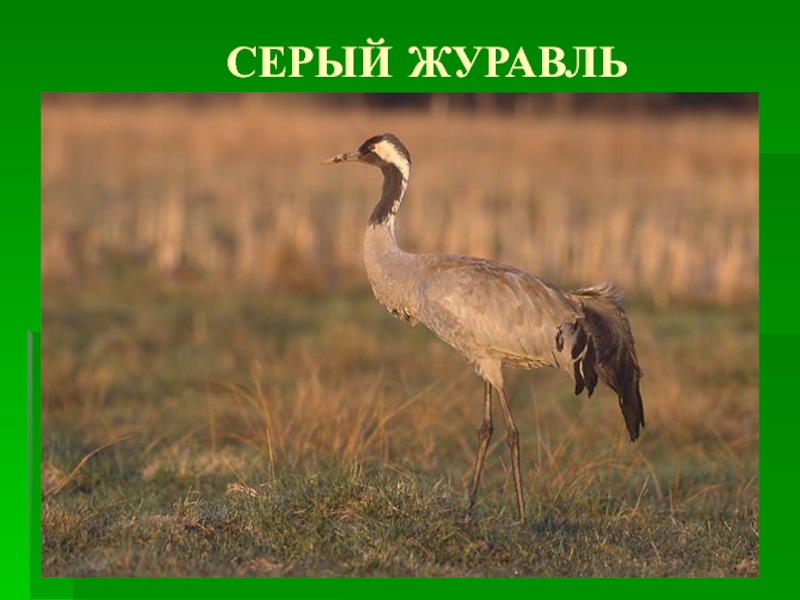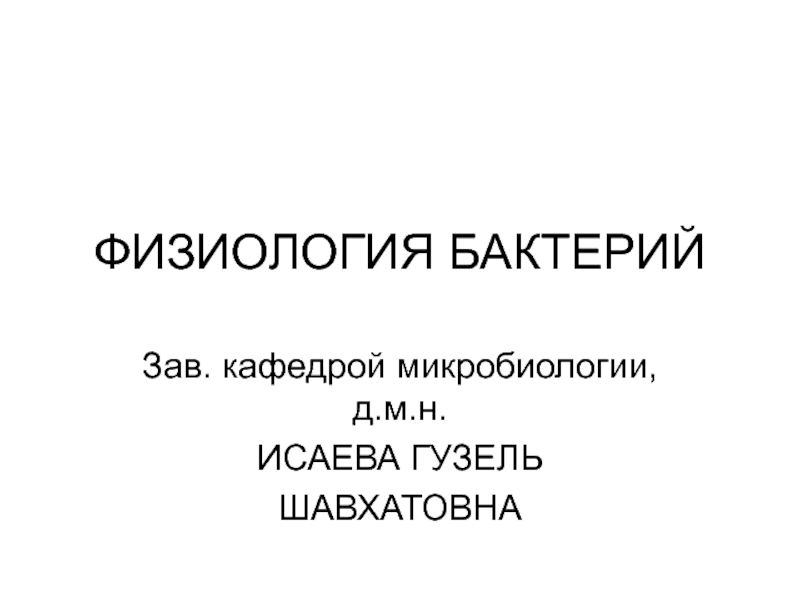- Главная
- Разное
- Дизайн
- Бизнес и предпринимательство
- Аналитика
- Образование
- Развлечения
- Красота и здоровье
- Финансы
- Государство
- Путешествия
- Спорт
- Недвижимость
- Армия
- Графика
- Культурология
- Еда и кулинария
- Лингвистика
- Английский язык
- Астрономия
- Алгебра
- Биология
- География
- Детские презентации
- Информатика
- История
- Литература
- Маркетинг
- Математика
- Медицина
- Менеджмент
- Музыка
- МХК
- Немецкий язык
- ОБЖ
- Обществознание
- Окружающий мир
- Педагогика
- Русский язык
- Технология
- Физика
- Философия
- Химия
- Шаблоны, картинки для презентаций
- Экология
- Экономика
- Юриспруденция
Carbon Sequestrationand Land Degradation презентация
Содержание
- 1. Carbon Sequestrationand Land Degradation
- 2. Presentation Outline Carbon sequestration concepts and rationale
- 3. Global Concern is in the Air
- 4. Greenhouse effect The greenhouse effect is
- 5. Melting of Alaska’s Muir Glacier between 1948 and 2004
- 6. Why are Greenhouse Gases Important? Global ecological
- 7. Projected Effects of Global Warming and the Resulting Changes in Global Climate
- 8. Managing Carbon Emission Rising concentration of greenhouse
- 9. Carbon Sequestration Carbon sequestration is the process
- 10. Carbon Sequestration Long-term storage of carbon in:
- 11. Terrestrial Carbon Sequestration Increasing the net fixation
- 12. Terrestrial Carbon Sequestration
- 13. Focus on maximizing carbon input Plant selection
- 14. Focus on minimizing carbon loss from soil
- 15. Tree plantings Conservation-tillage cropping Animal manure application
- 16. Tree plantings have the advantage of accumulating
- 17. Tree Plantings
- 18. Minimal disturbance of the soil surface is
- 19. In the USA and Canada, no-tillage cropping
- 20. No tillage needs high-residue producing cropping system
- 21. From the 12th year of an irrigated
- 22. Animal Manure Application Since animal manure contains
- 23. Animal Manure Application Long-term studies on farmyard
- 24. Animal Manure Application Gupta et al. (1992)
- 25. Animal Manure Application Soil carbon retention rate
- 26. On an abandoned brick-making site in southeastern
- 27. Degradation of permanent grasslands can occur from
- 28. Improved Grassland Management Franzluebbers et al. (2001)
- 29. Summary and Conclusions Greenhouse gas concentrations in
Слайд 1Carbon Sequestration
and Land Degradation
Lecture # 03
Environment and crop production (AGR-411)
Слайд 2Presentation Outline
Carbon sequestration concepts and rationale
Relevant management approaches to avoid land
Summary of research quantifying soil carbon sequestration
Слайд 3Global Concern is in the Air
The difference of radiant energy received
Слайд 4Greenhouse effect
The greenhouse effect is a process by which thermal radiation
Слайд 6Why are Greenhouse Gases Important?
Global ecological concern for the anthropogenic source
CO2 – 31% increase
CH4 – 151% increase
N2O – 17% increase
Cause radiative forcing of the atmosphere, which could alter global temperature and ecosystem functioning
Can be manipulated by human activities
Слайд 8Managing Carbon Emission
Rising concentration of greenhouse gases has been largely attributed
Reducing net greenhouse gas emission is possible:
Reduce fossil fuel combustion by becoming more energy efficient
Rely more on low-carbon energy sources
Solar energy capture
Wind power generation
Biomass fuels (fuel that contains energy from geologically recent carbon fixation. These fuels are produced from living organisms.)
Carbon sequestration
Слайд 9Carbon Sequestration
Carbon sequestration is the process of capture and long-term storage
Слайд 10Carbon Sequestration
Long-term storage of carbon in:
Terrestrial biosphere
Underground in geologic formations
Oceans
so that
Слайд 11Terrestrial Carbon Sequestration
Increasing the net fixation of atmospheric CO2 by terrestrial
Retaining carbon in plant materials and enhancing the transformation of carbon to soil organic matter
Reducing the emission of CO2 from soils caused by heterotrophic oxidation of soil organic carbon
Increasing the capacity of deserts and degraded lands to sequester carbon
Слайд 13Focus on maximizing carbon input
Plant selection
Species, cultivar, variety
Growth habit (perennial /
Rotation sequence
Biomass energy crops
Tillage
Type
Frequency
Fertilization
Rate, timing, placement
Organic amendments
Management Approaches
to Sequester Carbon
from Atmosphere to Biosphere
Integrated management
Pest control
Crop / livestock systems
Слайд 14Focus on minimizing carbon loss from soil
Reducing soil disturbance
Less intensive tillage
Controlling
Utilizing available soil water
Promotes optimum plant growth
Reduces soil microbial activity
Maintaining surface residue cover
Increased plant water use and production
More fungal dominance in soil
Management Approaches
to Sequester Soil Carbon
from Atmosphere to Biosphere
Слайд 15Tree plantings
Conservation-tillage cropping
Animal manure application
Green-manure cropping systems
Improved grassland management
Cropland-grazingland rotations
Optimal fertilization
Management
Слайд 16Tree plantings have the advantage of accumulating carbon in perennial biomass
Tree Plantings
Issues of importance are:
Climate
Selecting adapted species
Soil condition
Plant density
Intended use
Type of intercropping
Слайд 18Minimal disturbance of the soil surface is critical in avoiding soil
Conservation-Tillage Cropping
Слайд 19In the USA and Canada, no-tillage cropping can sequester an average
Conservation-Tillage Cropping
Franzluebbers and Follett (2005) Soil Tillage Res. 83:1-8
Слайд 20No tillage needs high-residue producing cropping system to be effective.
Conservation-Tillage Cropping
Soil
in the Southeastern USA
----------------------------------------------------
0.28 + 0.44 Mg C/ha/yr
(without cover cropping)
0.53 + 0.45 Mg C/ha/yr
(with cover cropping)
Franzluebbers (2005) Soil Tillage Res. 83:120-147.
Photos of 2 no-tillage systems in Virginia USA
Слайд 21From the 12th year of an irrigated wheat-maize rotation in the
Conservation-Tillage Cropping
Govaerts et al. (2006) Soil Tillage Res. (in press)
Infiltration Yield (Mg ha-1) 1996-2002
Tillage Residues (cm h-1) Maize Wheat
------------------------------------------------------------------------------------------------
Zero Without
Zero With
------------------------------------------------------------------------------------------------
18
90
3.4
4.8
3.9
5.4
Retaining residues for 12 years significantly increased soil organic C, but absolute treatment values were not reported.
Слайд 22Animal Manure Application
Since animal manure contains 40-60% carbon, its application to
Soil Organic C (Mg ha-1)
Effect of manure application Without With
----------------------------------------------------------------------------------------------
----------------------------------------------------------------------------------------------
2-yr studies (n=6) 19.8 + 8.9 19.6 + 8.4
11 + 8-yr studies (n=8) 30.6 + 11.4 36.8 + 10.6
SOC sequestration for all (Mg ha-1 yr-1) 0.26 + 2.15
SOC sequestration for >2-yr studies 0.72 + 0.67
Conversion of C in poultry litter to soil organic C was 17 + 15%.
Note: Manure application transfers C from one land to another.
Franzluebbers (2005) Soil Tillage Res. 83:120-147.
Слайд 23Animal Manure Application
Long-term studies on farmyard manure (FYM) application to soil
Kapkiyai et al. (1999) Soil Biol. Biochem. 31:1773-1782
18-yr field experiment in Kenya (23 °C, 970 mm)
0.17 + 0.07 Mg C ha-1 yr-1 with 10 Mg ha-1 yr-1 FYM compared to without FYM
9 + 3% of added C retained in soil
Crop yield with FYM (5.3 Mg ha-1) > without FYM (3.3 Mg ha-1)
Agbenin and Goladi (1997) Agric. Ecosyst. Environ. 63:17-24
45-yr field experiment in Nigeria (28 °C, 1070 mm)
0.21+ 0.01 Mg C ha-1 yr-1 with 5 Mg ha-1 yr-1 FYM compared to without FYM
Total soil phosphorus increased with FYM (21 + 12 kg ha-1 yr-1)
Слайд 24Animal Manure Application
Gupta et al. (1992) Arid Soil Res. Rehabil. 6:243-251
20-yr
(26 °C, 440 mm)
Pearl millet–wheat
Слайд 25Animal Manure Application
Soil carbon retention rate from manure application is affected
Temperate or frigid regions (23 + 15%)
Thermic regions (7 + 5%)
Moist regions (8 + 4%)
Dry regions (11 + 14%)
Percentage of carbon applied as manure retained in soil
(review of literature in 2001)
Слайд 26On an abandoned brick-making site in southeastern China (16.5 °C, 1600
Planting of ryegrass (Lolium perenne) under China fir (Cunninghamia lanceolata) for 7 years resulted in soil organic C sequestration of 0.36 + 0.40 Mg C ha-1 yr-1.
Green-Manure Cropping Systems
Слайд 27Degradation of permanent grasslands can occur from accelerated soil erosion, compaction,
Strategies to sequester carbon in soil should improve quality of grasslands
Strategies for restoration should include:
Improved Grassland Management
Enhancing soil cover
Improving soil structure to minimize water runoff and soil erosion
Слайд 28Improved Grassland Management
Franzluebbers et al. (2001) Soil Sci. Soc. Am. J.
Establishment of bermudagrass pasture following long-term cropping in Georgia USA (16 °C, 1250 mm)
Soil organic carbon sequestration rate (Mg ha-1 yr-1) (0-5 yr):
--------------------------------
Hayed 0.30
Unharvested 0.65
Grazed 1.40
Слайд 29Summary and Conclusions
Greenhouse gas concentrations in the atmosphere are increasing and
A diversity of agricultural management practices can be employed to sequester more carbon in plants and soil
Syntheses of available data are needed
Gaps in our knowledge need to be researched
Strategies to sequester soil carbon will also likely restore degraded land and avoid further degradation
